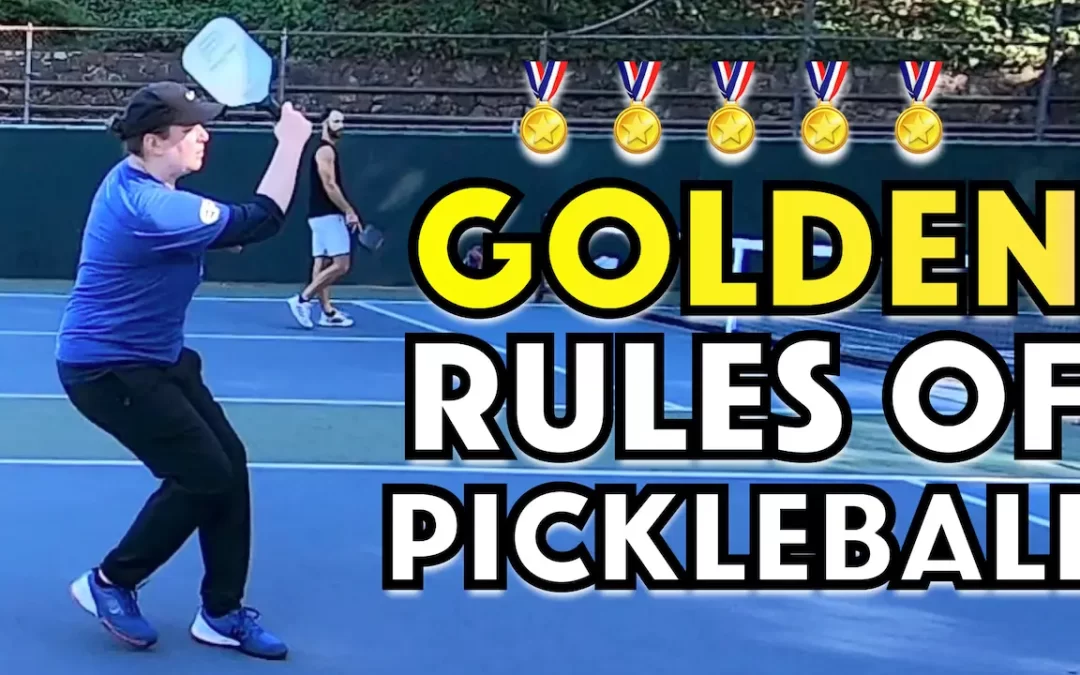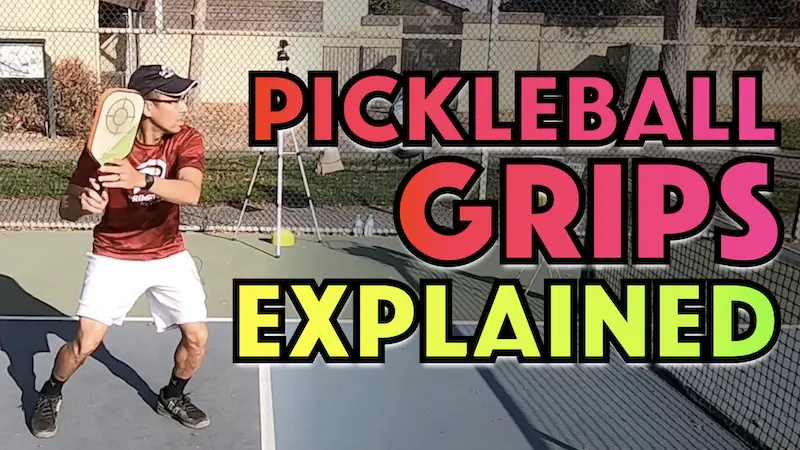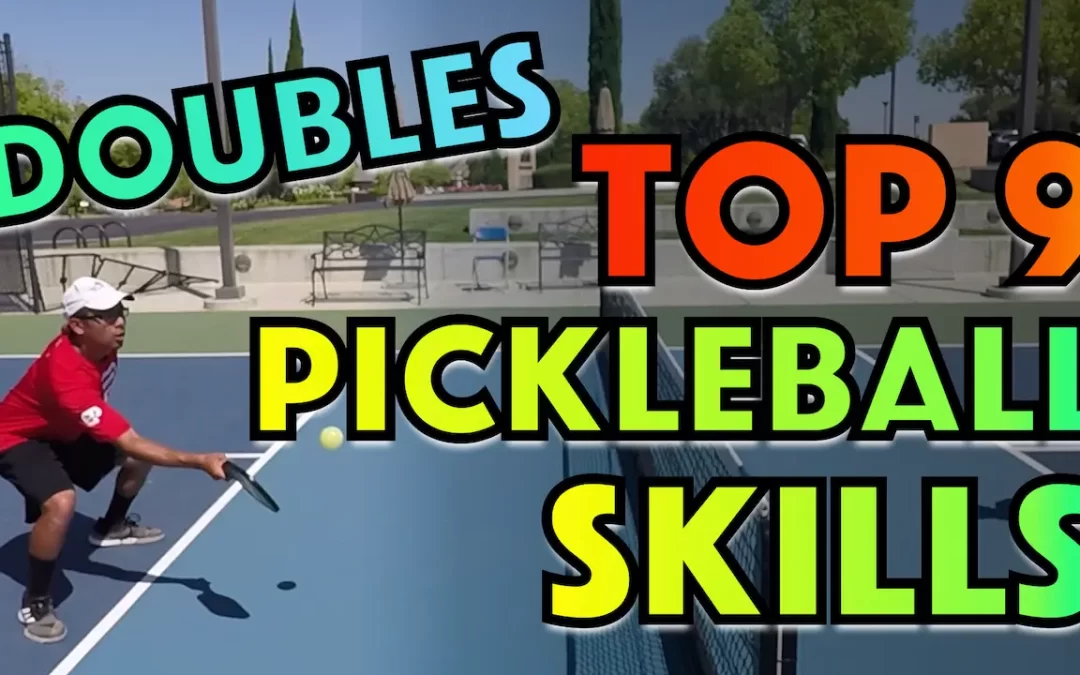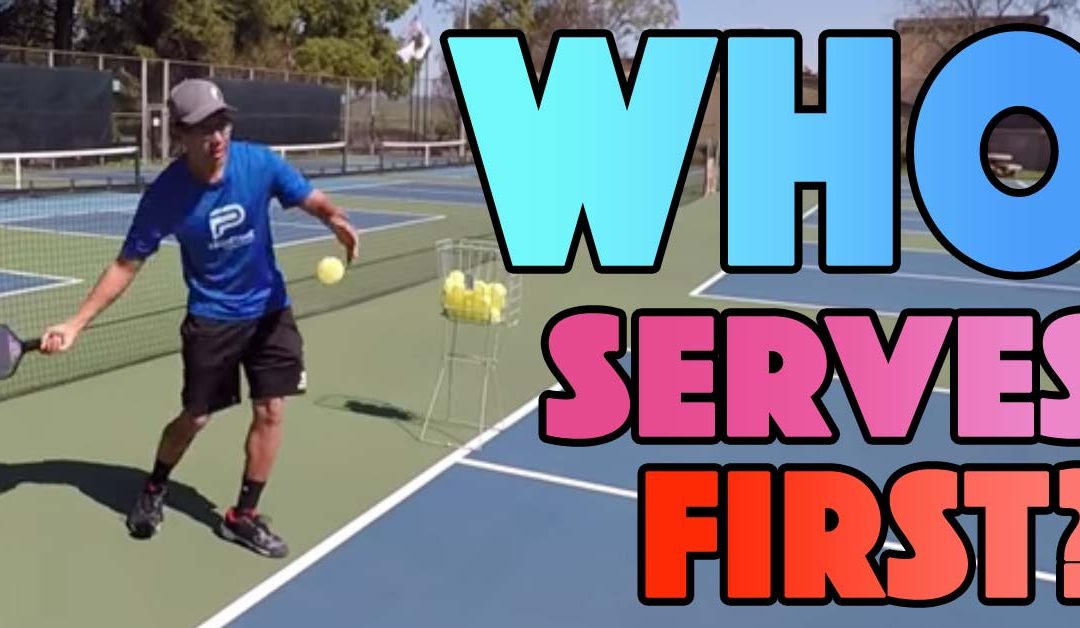If you’re new to pickleball or looking to transform your game, then learning how to hit a pickleball properly is a great way to start.
To get you hitting basic shots accurately, we’ve put together some advice from a few advanced pickleball players who wish they’d known these tips and tricks when they first started playing.
Are you ready to grab your paddle and learn some pickleball hitting tips?
What Is the Best Way to Hit a Pickleball?
For starters, you want to use a continental grip.
A pickleball court is smaller than a tennis court and you have a lot less time to react because of the short distances the ball travels. This is especially true if you’re up close to the net at the non-volley zone (kitchen).
The continental grip is the most flexible, allowing you to hit a backhand shot and advanced shots without changing your hand position on the paddle.
Having one universal grip for a forehand shot and a backhand shot helps when you must make a variety of shots in quick succession with little reaction time.
What is the Continental Grip?
To set up the grip, consider the position your hand is in when you shake hands. Now place the paddle head on its edge with the handle facing towards you.
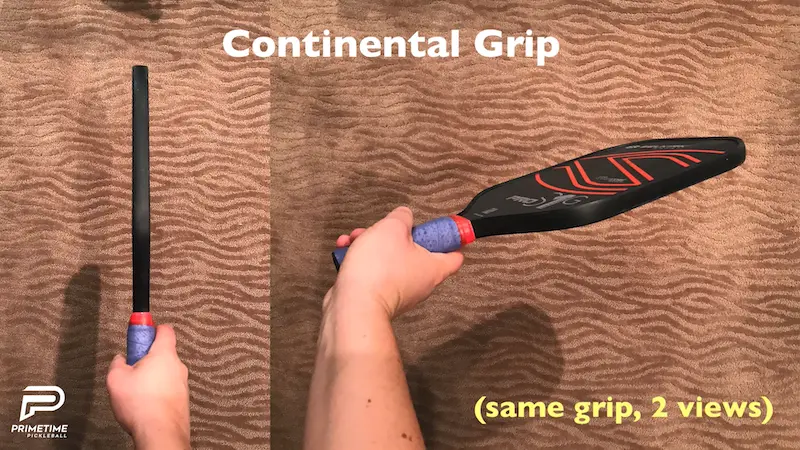
Grip the handle with your palm facing down. Wrap your fingers around the grip so that the “V-shape” made by your thumb and index finger points straight back at you.
It’s as simple as that.
You can now use this grip for forehands, backhands, block shot, and a lob shot.
How Do You Hit a Pickleball for Beginners | 6 Basics To Master
If you’re a beginner pickleball player, then mastering each stroke will take a little time.
Here are some of the basic effective shots you can use to set yourself up for success on the court.
1. Serving
In contrast to tennis, serving is performed with an underhand stroke where you contact the ball below your waist level and swing in a low to high motion.
Avoid hitting the ball with only wrist action and essentially just slapping at it with your arm, forearm and wrist. You want to engage all the muscles in your body to provide plenty of power into the ball so that it feels effortless when you make contact.
At first it’s easiest if you learn to step forward as you initiate the serve.
You can use a closed stance or semi-open stance but in either case, you must turn your shoulders so that they face the side and as you come through the swing, you will finish facing the net.
Your swing should be smooth and relaxed with a relaxed grip. Picture yourself hitting through three balls in a line, to achieve the correct line of travel for the paddle. This ensures that you strike all the way through contact and don’t come around too quickly.
2. Groundstrokes
Groundstrokes are hit after the ball bounces once and are the type of shot you’ll need when you’re playing from deeper in the court. Such as when you are returning serve. You’ll also use them as you make your approach to the net or for any other shot where you find yourself playing it from closer to the baseline.
Although groundstrokes only make up a small percentage of strokes in pickleball doubles, you’ll need to master them to set yourself up for your approach to the net, returning a serve or when making the third shot drop.
Footwork and Swing
Make sure your feet arrive in position first, before attempting to swing. Step back, to the side, or forward so that the ball is positioned slightly ahead of your body when you make contact.
Avoid trying to move into position while hitting the ball. Your balance will be off, and it will result in a poorly hit shot.
Once you’re in position, strike the ball with a short backswing and transfer your weight forward onto the balls of your feet. No need to lift your heels, simply transfer the weight into the front part of your feet. This will help towards keeping the pickleball down and allow you to transfer plenty of energy into your shot which turns in to fast and hard shots.
3. Volleys
Volleys are hit out of the air before the ball has a chance to bounce. You’ll find that volleys are compact shots that can be hit softly or with power, depending on where you and your opponents are on the court.
The thing to concentrate on when volleying is a stable paddle face. The paddle face should be slightly open and you will perform a pushing motion as you strike the ball.
It doesn’t matter whether you are performing a forehand or a backhand stroke, the paddle is pushed forward a short distance with the paddle face staying stable at the same angle.
To have full control of your volleys, you want to contact the ball about one to two feet away from your body. Contacting the ball too close to your chest will result in balls falling short of, or into the net.
Contacting the ball at the full extension of your arm will send the ball up into the air or off to the side.
4. Drops
Drops are designed to make your opponent run by arcing the ball gently over the net to fall near the feet of your opponent who presumably is standing up at the NVZ line because that is the best time to use a drop.
The apex of the ball should be on your side of the net so that the ball is descending as it crosses the net into the non-volley zone of your opponents.
You’ll want to take some of the speed off the ball to achieve this. Hitting the ball too hard and flat when executing a drop will cause it to shoot high and passed the kitchen leaving you vulnerable to attacks. With practice, you’ll get a feel for how hard you need to hit the ball to achieve your target area.
Drops are difficult to attack as a properly executed drop shot forces your opponent to hit up on the ball so these are ideal to use so that you and your partner can also get up to the net.
5. Dinks
The dink is a softly-struck shot executed from up at the NVZ line that, like the drop, sails over the net in a gentle arc to land inside the non-volley zone. The main difference is that a drop is executed from further back in the court and is used to advance to the net while the dink is used while up at the NVZ line primarily to setup an attack.
Using a continental grip, set the paddle from a position low to the ground upward towards the ball. It’s more of a pushing motion rather than a full on swing such as what you would use for a groundstroke.
The paddle starts essentially beside or very slightly behind, so it has a very short backswing and ends with a very short follow-through. Contact is made with the ball ahead of your body.
To have success with all types of dink shots, you need to develop a consistent and stable motion with few moving parts that allows you to control the ball’s speed and direction every time.
Tall players should avoid bending over at the waist to dink. You must adopt a low body position with your knees bent. This gives you far more control over the shot. You also get better visualization on the shot when you get low and can better see what shots are high enough to attack or too low to attack.
Your target zone for your dinks will be largely inside the non-volley zone. You also want to make us of deeper dinks, just passed the NVZ line to force your opponent into late and difficult contact points. You’ll be mixing your locations around to keep the guessing and hopefully pressure them into a pop up that you can attack.
Don’t try to skim the net with your dinks, you’ll probably ending up sending them deeper than you’d like. Give them a little loft so they descend after clearing the net. This also gives you a bit of a margin of safety to clear the net while staying within the non-volley zone line.
6. Offensive vs Defensive
An understanding of the offensive and defensive stages of a game will help you pick the right shots to play.
There’s no point in trying to pull off a winning shot when you are playing defense. It’s very high risk and is a statistically losing proposition.
When on defense, you should concentrate on staying in the game, get a good ready position between each shot and be prepared to dig and grind your way out of a jam. You’re trying to win your way back to neutral so that you can then rebuild to an attack.
If you find yourself stuck on the baseline or halfway towards the kitchen line, you are the one who must play defensively and pick your shots carefully to avoid making a mistake and losing the point. It is extremely easy to lose the point when you’re at at disadvantage.
Approaching the kitchen line is an offensive play and is the aim of most players. You are winning the ground war if you can get there before them. If you can keep your opponent on the baseline, then you have the advantage and can play offensively.
Most players love to be on offense and understand how to attack. In fact, they love it so much that many players are playing offensively all the time and miss a lot as a result. Learn and understand when it’s time to defend and learn how to defend well. Strong defense will catapult your game to entirely new levels.
Understanding the Soft Game
To become an accomplished pickleball player, you need to understand how and why one uses the soft game.
While hitting hard is okay, when you first start playing, as you progress you have to develop your soft game.
Hitting third shot drops, resets, and hitting neutral balls into your opponent’s non-volley zone are key elements of pickleball.
There are three different stages in a pickleball point.
- Attacking
- Defending
- Neutral
Dinks and drop shots can be attacking, aggressive play, but there are times when you’ll have to play more neutral shots to come in from a deep return off the baseline and approach the non-volley zone.
If you get pulled back off the line and your opponent is attacking you, you must learn how to set the shots in so that you can get back up to the non-volley line.
How Do You Hit Hard in Pickleball & Is it Necessary?
The power game is fine, despite what you may have heard. It’s all about timing and know when to use and when not to sue it.
If you like driving the ball, then learning to hit the ball well with full swings is a key skill. You want to get extra pace on the ball without sacrificing accuracy because you’re going to need that power to overwhelm your opponents with it.
If you hit the ball hard and find that it is going out of bounds and you’re not finding success with it, the power game may not be for you.
Hitting hard requires practice and it takes time to learn how to hit the ball low to the net with consistency. Trying to get the ball to dip lower as it approaches your opponent, forcing them to play up on the ball, may require that you take some of the pace off the ball at times.
Power will not solve every puzzle in pickleball so you will need other shots even if you love your power game.
Target their hitting side shoulder or the areas low and to the side of your opponent so they have will get jammed or have to reach low and away, respectively, are two good strategies. If they get jammed or have to reach to the forehand or backhand, it’s a much better shot for you, as they will not have as much control over where the return goes.
Warning: Don’t neglect your soft game! To become an accomplished player you must have the full range of strokes for all aspects of the game.
Final Thoughts
To find success with your shots in pickleball, you need to concentrate on learning the fundamental strokes first before venturing further into more advanced skills. You can and will win a lot if you fundamentals are excellent. Make an effort to practice against a wall to get the feel for each stroke and ensure that you place your feet correctly relative to where the ball lands.
If you want to learn all there is to know about how to hit a pickleball, then stick around for more tips on how to take your pickleball game to the next level.

